What Are The Common Pros And Cons Of Log Cabin Homes?
Log cabin homes are a type of dwelling that is made from logs of wood. They are popular among people who love nature and want a rustic and cozy living experience. However, log cabin homes also have some drawbacks that may deter some potential buyers.
In this article, we will explore the pros and cons of log cabin homes to help you decide if they are right for you.
Pros of Log Cabin Homes
1. Energy-efficient
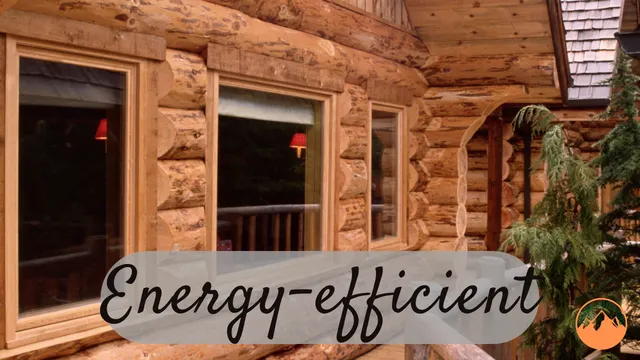
Log cabin homes can be a great choice for those who want to live in harmony with nature and save money on their utility bills.
They have two main advantages when it comes to energy efficiency: natural insulation and thermal mass.
- Insulation refers to the ability of wood to resist heat transfer, which means it can keep the indoor temperature stable regardless of the outdoor weather. As the logs create air pockets that trap heat in the winter and keep it out in the summer.
- Thermal mass refers to the ability of wood to store and release heat, which means it can help regulate the indoor temperature by absorbing heat during the day and releasing it at night. This helps to regulate the indoor temperature and reduce the need for artificial heating and cooling.
According to some sources1,2, log cabin homes can meet or exceed the Department of Energy’s ENERGY STAR standards for new construction, which require a high level of insulation and air tightness.
Log cabin homes can also benefit from other energy-saving features, such as energy-efficient windows, doors, appliances, lighting and heating systems3,4.
As a result, log cabin owners can save money on their heating and cooling costs, as well as reduce their environmental impact and enjoy an eco-friendly living space.
2. Environmentally friendly
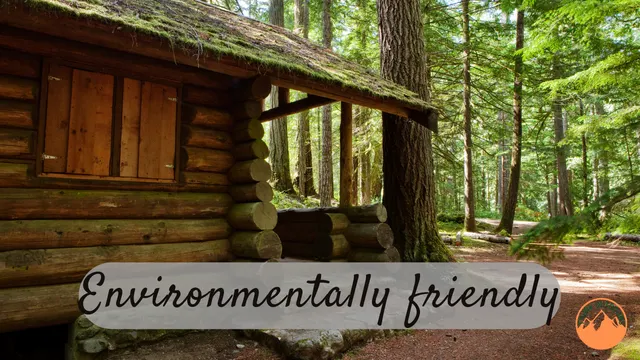
Another benefit of log cabin homes for those who care about the environment and want to reduce their ecological footprint.
Log cabin homes have several advantages when it comes to being environmentally friendly:
- Made of natural and renewable resources.
Wood is a biodegradable and recyclable material that can be harvested from sustainably managed forests.
Log cabins also use natural materials, such as stone, clay, and metal, that blend in with the surroundings and create a harmonious look.
- Low impact on the land and can use less energy and water than conventional homes.
Log cabins also have a low carbon footprint, as they require less energy and emit less greenhouse gases than conventional homes.
- Possibility of incorporate other green features and practices.
3. Comfort and relaxation
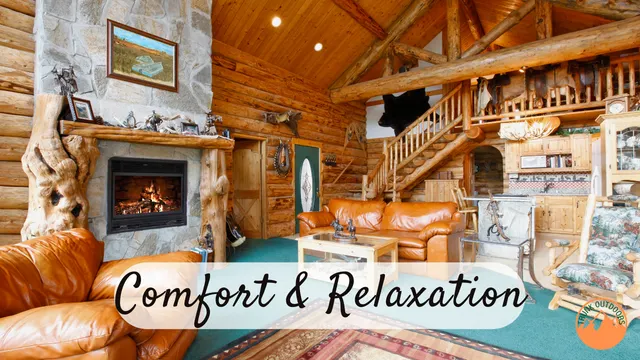
A third advantage of log cabin homes is their comfort and relaxation.
- Log cabins have a rustic charm, that appeals to many people who love the natural beauty and simplicity of wood.
- Create a cozy atmosphere, as they have warm colors, soft textures, and inviting features, such as fireplaces, porches, and lofts.
- Offer stress relief, as they provide a peaceful and quiet retreat from the hustle and bustle of modern life. Log cabins can help people relax and rejuvenate their mind and body.
4. Quiet, secure, and cozy
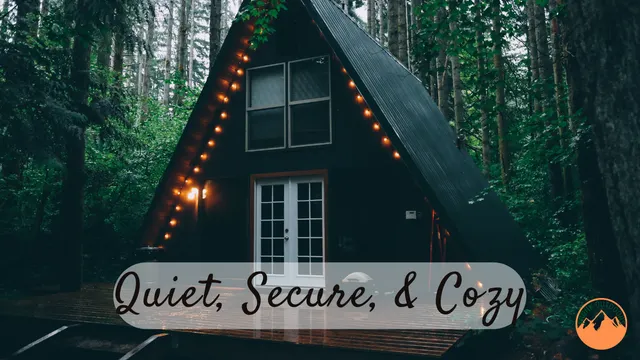
A fourth advantage of log cabin homes is their quietness, security, and coziness.
- Excellent soundproofing, as the thick logs absorb and block noise from outside and inside. This makes log cabins ideal for people who value privacy and tranquility.
- High durability, as they can withstand harsh weather conditions, such as storms, winds, and earthquakes.
- Good fire resistance, as they have a low flammability and a high charring rate. Log cabins can protect people and their belongings from potential threats and damages.
You can also read our comprehensive guide about How To Build A Log Cabin Using Trees.
5. Long lasting
A fifth advantage of log cabin homes is their long lastingness.
- Log cabins are built with quality craftsmanship, as they require skill and expertise to construct and assemble.
- High weather resistance, as they can adapt and adjust to changes in temperature and humidity.
- Great longevity, as they can last for decades or even centuries with proper care and maintenance.
- They are a wise investment that can serve generations of families and communities.
6. Affordable
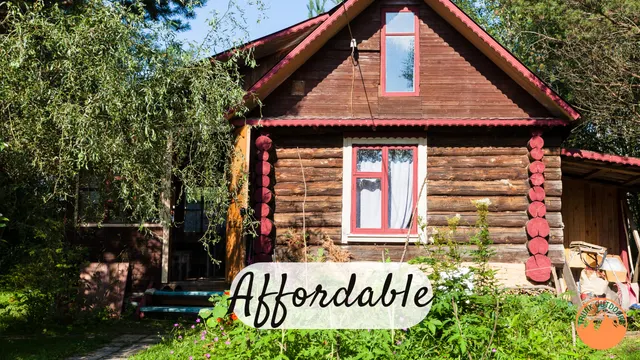
A sixth pros of log cabin homes is their affordability.
- Low construction cost, as they use less materials and labor than conventional homes.
- Energy savings, as they reduce the need for artificial heating and cooling and lower the utility bills.
- Tax benefits, as they may qualify for deductions or credits depending on the location and regulations.
Log cabins are a budget-friendly option that can save money and resources in the long run.
7. Customizable
A seventh advantage of log cabin homes is their customizability.
- Design flexibility, as they can be built in various shapes, sizes, and styles to suit different preferences and needs.
- Allowing for personalization, as they can be decorated and furnished according to one’s taste and personality.
- Encouraging creativity, as they can be modified and improved over time with new features and additions.
Log cabins are a fun and unique way to express oneself and create a dream home.
Cons of Log Cabin Homes
1. Maintenance-prone
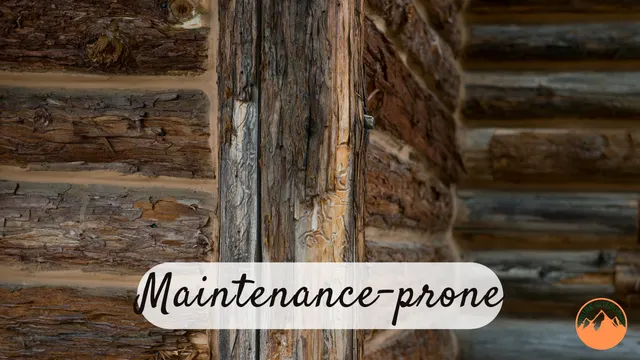
One of the main disadvantages of log cabin homes is their maintenance-proneness.
- Log cabins require regular and frequent staining and sealing to protect the wood from moisture, UV rays, and fungi.
- Need periodic chinking to fill the gaps between the logs and prevent air leaks and insect infestations.
- Suffer from checking, which is the cracking of the wood due to shrinkage and expansion.
Log cabins demand a lot of time, effort, and money to keep them in good condition.
2. Insurance issues
Another drawback of log cabin homes is their insurance issues.
- Log cabins may have higher premiums than conventional homes, as they are considered more risky and costly to insure.
- Limited coverage, as some insurance companies may exclude or limit certain types of damages, such as fire, water, or pest.
- Special requirements, such as extra inspections, certifications, or warranties to qualify for insurance.
Log cabins can pose a challenge for finding and securing adequate and affordable insurance.
3. Pest problems
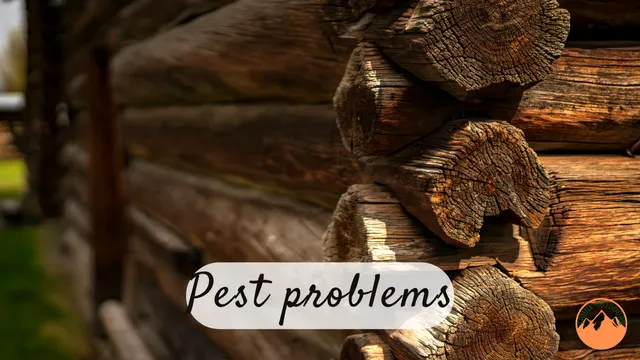
A third Cons of log cabin homes is their pest problems. They are vulnerable to various pests that can damage the wood and cause health and safety issues.
- May attract termites and carpenter ants, which can eat and tunnel through the wood and weaken the structure.
- May also attract woodpeckers, which can peck and drill holes in the wood and create noise and mess.
- Attract rodents, such as mice, rats, and squirrels, which can gnaw and nest in the wood and spread diseases and parasites.
Log cabins require regular and effective pest control measures to prevent and eliminate infestations.
4. Fitting problems
A fourth disadvantage of log cabin homes is their fitting problems. Log cabins may have difficulties with installing and maintaining modern amenities and utilities, such as plumbing, wiring, ventilation, and appliances.
- Limited space and access for pipes, wires, ducts, and outlets, which can make them more complicated and expensive to fit.
- Issues with moisture, temperature, and air quality, which can affect the performance and lifespan of the fittings.
Log cabin may require special or customized fittings to ensure functionality and compatibility.
5. Resale difficulties
A fifth disadvantage of log cabin homes is their resale difficulties.
- Challenges with finding and attracting potential buyers, as they are a niche market that appeals to a specific segment of the population.
- Issues with meeting the buyer preferences, as they may not match the current trends or standards of the housing market.
- Problems with the location factors, such as accessibility, infrastructure, and amenities, that can affect the value and demand of the property.
- Take longer and sell lower than conventional homes.
6. Electricity issues
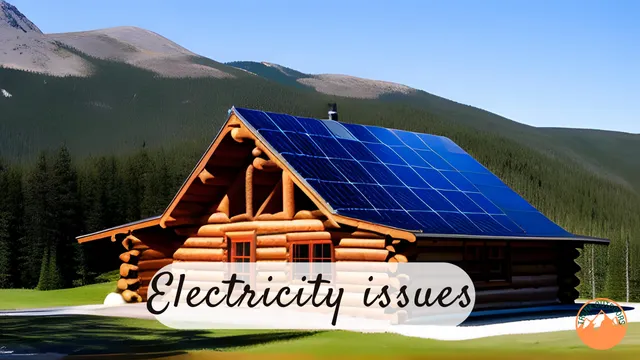
A sixth drawback of log cabin homes is their electricity issues.
- Log cabins may have problems with providing and maintaining reliable and sufficient electricity, especially if they are located in remote or rural areas.
- Frequent and prolonged power outages, which can disrupt the normal functioning and comfort of the home.
- Need backup generators, which can be costly and noisy to operate and maintain.
- Log cabins may use solar panels, which can be expensive and inefficient to install and use.
- May require alternative or additional sources of electricity to ensure adequate and consistent supply.
If you’re interesting about hunting cabin, you can read about What is a Hunting Cabin?
FAQs
How Long Can You Live in a Log Cabin?
Log cabins can last up to sixty years and more, if you properly maintain the timber and insulate the cabin.
Therefore, if you want to live in a log cabin for a long time, you should be prepared to take good care of it and protect it from the elements.
Are log cabins profitable?
Log cabins can be profitable if you use them as vacation rentals.
Many people are looking for a rustic and relaxing getaway, you can charge higher rates for your cabin than for a regular home, and attract more guests throughout the year.
How Much Does It Cost to Build a Cabin?
The average cost to build a cabin ranges from $85 to $175 per square foot. This means that a 500-square-foot cabin could cost anywhere from $42,500 to $87,500.
However, this does not include the cost of land, site preparation, utilities, and services, which can add significantly to the total cost.
Conclusion
Log cabin homes are a type of dwelling that is made from logs of wood. They have many pros and cons that need to be weighed carefully before making a decision.
Some of the pros are energy efficiency, environmental friendliness, comfort and relaxation, quietness, security, coziness, long lastingness, affordability, and customizability.
Some of the cons are maintenance-proneness, insurance issues, pest problems, fitting problems, resale difficulties, and electricity issues.
Log cabin homes are not for everyone, but they can be a great option for those who love nature and want a rustic and cozy living experience.